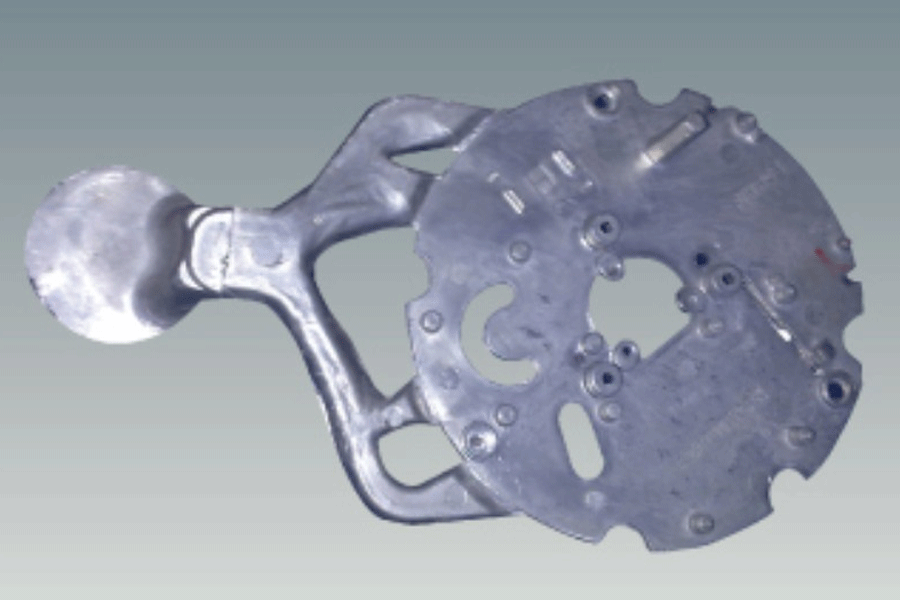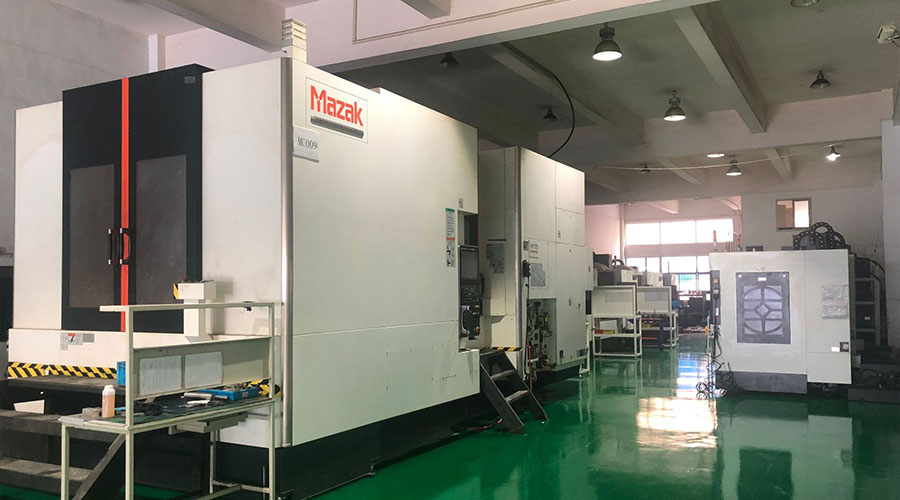New Technology Of Die-Casting Mold Surface Treatment
|
Die-casting molds are a large category of molds. With the rapid development of the world’s automobile and motorcycle industry, the die-casting industry has ushered in a new era of development. At the same time, higher requirements are put forward for the comprehensive mechanical properties and life of die-casting molds. |

A variety of new die-casting mold surface treatment technologies continue to emerge, but in general they can be divided into the following three categories:
- 1.Improved technology of traditional heat treatment process;
- 2.Surface modification technology, including surface thermal expansion treatment, surface phase change strengthening, electric spark strengthening technology, etc.;
- 3.Coating technology, including electroless plating, etc.
Die-casting molds are a large category of molds. With the rapid development of the world’s automobile and motorcycle industry, the die-casting industry has ushered in a new era of development. At the same time, higher requirements are put forward for the comprehensive mechanical properties and life of die-casting molds. Luo Baihui, Secretary-General of the International Mould Association, believes that it is still difficult to meet the ever-increasing performance requirements that only rely on the application of new mold materials. Various surface treatment technologies must be applied to the surface treatment of die-casting molds to achieve high efficiency for die-casting molds. , High precision and long life requirements. Among various molds, the working conditions of die-casting molds are relatively harsh. Die casting is to fill the mold cavity with molten metal under high pressure and high speed and die-casting. It repeatedly contacts the hot metal during the working process. Therefore, the die-casting mold is required to have high thermal fatigue, thermal conductivity, wear resistance, and corrosion resistance. , Impact toughness, red hardness, good mold release, etc. Therefore, the surface treatment technology requirements for die-casting molds are relatively high.
Improved technology of traditional heat treatment process
The traditional heat treatment process of die-casting molds is quenching-tempering, and later surface treatment technology has been developed. Due to the variety of materials that can be used as die-casting molds, the same surface treatment technology and process applied to different materials will produce different effects. Schoff proposes substrate pretreatment technology for mold substrate and surface treatment technology.
On the basis of traditional technology, suitable processing technology for different mold materials is proposed to improve mold performance and increase mold life. Another development direction for the improvement of heat treatment technology is to combine traditional heat treatment technology with advanced surface treatment technology to increase the service life of die-casting molds.
For example, the chemical heat treatment method carbonitriding, NQN combined with the conventional quenching and tempering process (namely carbonitriding-quenching-carbonitriding composite strengthening, not only obtains higher surface hardness, but also effective hardening layer
The depth increases, the hardness gradient distribution of the infiltrated layer is reasonable, the tempering stability and the corrosion resistance are improved, so that while the die-casting mold obtains good core performance, the surface quality and performance are greatly improved.
Surface modification technology
Surface thermal diffusion technology
This type includes carburizing, nitriding, boronizing, carbonitriding, sulfur carbonitriding and so on.
Carburizing and carbonitriding
The carburizing process is used in cold, hot work and surface strengthening of plastic molds, which can improve the life of the mold. For example, the die-casting mold made of 3Cr2W8V steel is first carburized, then quenched at 1140~1150℃, and tempered twice at 550℃. The surface hardness can reach HRC56~61, which increases the die life of die-casting non-ferrous metals and their alloys by 1.8~3.0 times. .
When carburizing, the main process methods include solid powder carburizing, gas carburizing, vacuum carburizing, ion carburizing, and carbonitriding formed by adding nitrogen to the carburizing atmosphere. Among them, vacuum carburizing and ion carburizing are technologies that have been developed in the past 20 years. This technology has the characteristics of fast carburizing, uniform carburizing, smooth carbon concentration gradient, and small deformation of the workpiece. It will be used on the surface of the mold, especially the precision mold. Play an increasingly important role in surface treatment.
Nitriding and related low-temperature thermal expansion technology
This type includes nitriding, ion nitriding, carbonitriding, oxygen nitriding, sulphur nitriding and ternary sulphur carbon nitriding, oxygen, nitrogen and sulfur. These methods have simple processing technology, strong adaptability, low diffusion temperature, generally 480 ~ 600 ℃, small deformation of the workpiece, especially suitable for surface strengthening of precision molds, and high hardness of the nitride layer, good wear resistance, and good Anti-sticking performance.
3Cr2W8V steel die-casting mold, after quenching and tempering and nitriding at 520~540℃, the service life is 2 to 3 times longer than that of non-nitriding moulds. Many die-casting molds made of H13 steel in the United States need to be nitrided, and nitriding is used instead of one-time tempering. The surface hardness is as high as HRC65~70, while the core of the mold has low hardness and good toughness, so as to obtain excellent integration.
Mechanical properties. Nitriding process is a commonly used process for surface treatment of die-casting molds. However, when a thin and brittle white layer appears in the nitrided layer, it cannot resist the effect of alternating thermal stress, and it is easy to produce micro-cracks and reduce thermal fatigue resistance. Therefore, during the nitriding process, the process must be strictly controlled to avoid the generation of brittle layers. Foreign countries propose to use secondary and multiple nitriding processes. The method of repeated nitriding can decompose the white bright nitride layer that is prone to microcracks during service, increase the thickness of the nitriding layer, and at the same time make the mold surface have a thick residual stress layer, so that the life of the mold can be significantly improved. In addition, there are methods such as salt bath carbonitriding and salt bath sulphur nitrocarburizing.
These processes are widely used in foreign countries and rarely seen in China. For example, the TFI+ABI process is immersed in an alkaline oxidizing salt bath after nitrocarburizing in a salt bath. The surface of the workpiece is oxidized and appears black, and its wear resistance, corrosion resistance and heat resistance have been improved. The life of the aluminum alloy die-casting die treated by this method is increased by hundreds of hours. Another example is the oxynit process developed in France, where nitrocarburizing followed by nitriding is applied to non-ferrous metal die-casting molds with more characteristics.
Link to this article: New Technology Of Die-Casting Mold Surface Treatment
Reprint Statement: If there are no special instructions, all articles on this site are original. Please indicate the source for reprinting:https://www.cncmachiningptj.com/,thanks!
 PTJ® provides a full range of Custom Precision cnc machining china services.ISO 9001:2015 &AS-9100 certified. 3, 4 and 5-axis rapid precision CNC machining services including milling, turning to customer specifications,Capable of metal & plastic machined parts with +/-0.005 mm tolerance.Secondary services include CNC and conventional grinding, drilling,die casting,sheet metal and stamping.Providing prototypes, full production runs, technical support and full inspection.Serves the automotive, aerospace, mold&fixture,led lighting,medical,bicycle, and consumer electronics industries. On-time delivery.Tell us a little about your project’s budget and expected delivery time. We will strategize with you to provide the most cost-effective services to help you reach your target,Welcome to Contact us ( [email protected] ) directly for your new project.
PTJ® provides a full range of Custom Precision cnc machining china services.ISO 9001:2015 &AS-9100 certified. 3, 4 and 5-axis rapid precision CNC machining services including milling, turning to customer specifications,Capable of metal & plastic machined parts with +/-0.005 mm tolerance.Secondary services include CNC and conventional grinding, drilling,die casting,sheet metal and stamping.Providing prototypes, full production runs, technical support and full inspection.Serves the automotive, aerospace, mold&fixture,led lighting,medical,bicycle, and consumer electronics industries. On-time delivery.Tell us a little about your project’s budget and expected delivery time. We will strategize with you to provide the most cost-effective services to help you reach your target,Welcome to Contact us ( [email protected] ) directly for your new project.
Link to this article:New Technology Of Die-Casting Mold Surface Treatment
Reprint Statement: If there are no special instructions, all articles on this site are original. Please indicate the source for reprinting.:Cut Wiki,Thanks!^^
